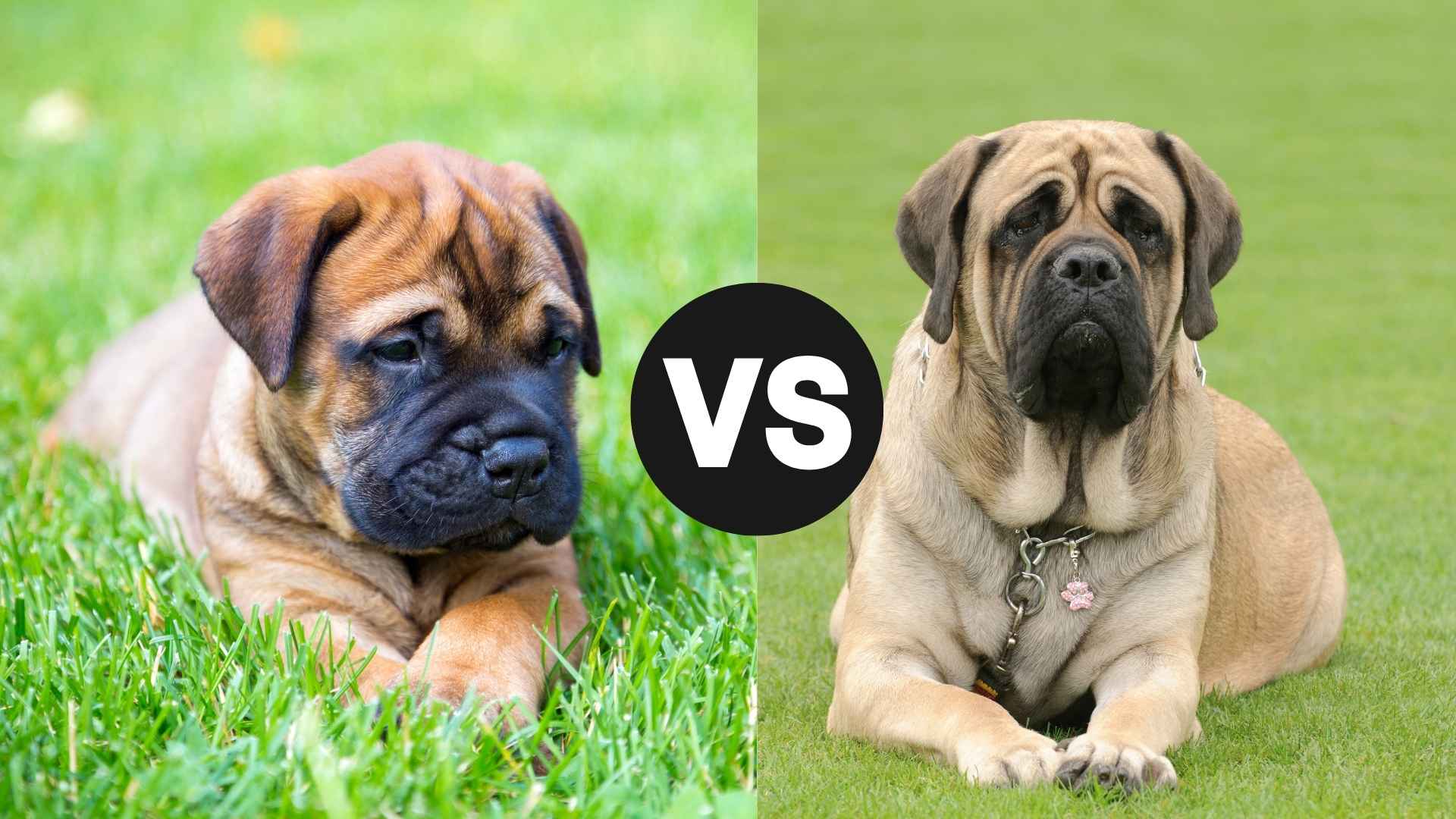Choosing the right dog breed can be a challenge, especially when faced with two impressive and similar options like the Bullmastiff and Mastiff. Both breeds are known for their size, strength, and unwavering loyalty, making them fantastic companions and formidable protectors. However, despite their shared characteristics, there are distinct differences between these two mighty dogs.
In this blog, we’ll explore the key similarities and differences between the Bullmastiff and Mastiff, from their history and temperament to their care needs and suitability as pets. Whether you’re a seasoned dog owner or a first-time pet parent, understanding what sets these two breeds apart will help you determine which is the best fit for your home and lifestyle.
Let’s dive into the Bullmastiff vs Mastiff comparison and uncover everything you need to know before making your choice.
Bullmastiff vs. Mastiff
The Bullmastiff – a cross between Bulldog and the Mastiff– is a powerful and protective breed. It was originally developed in England as a gamekeeper’s night dog to guard estates from poachers. Known for their strong, muscular build and calm demeanor, Bullmastiffs are known to be real softies around their family. They are typically large but not as massive as their Mastiff counterparts, with a broad head, short muzzle, and distinctive dark masks around their faces.
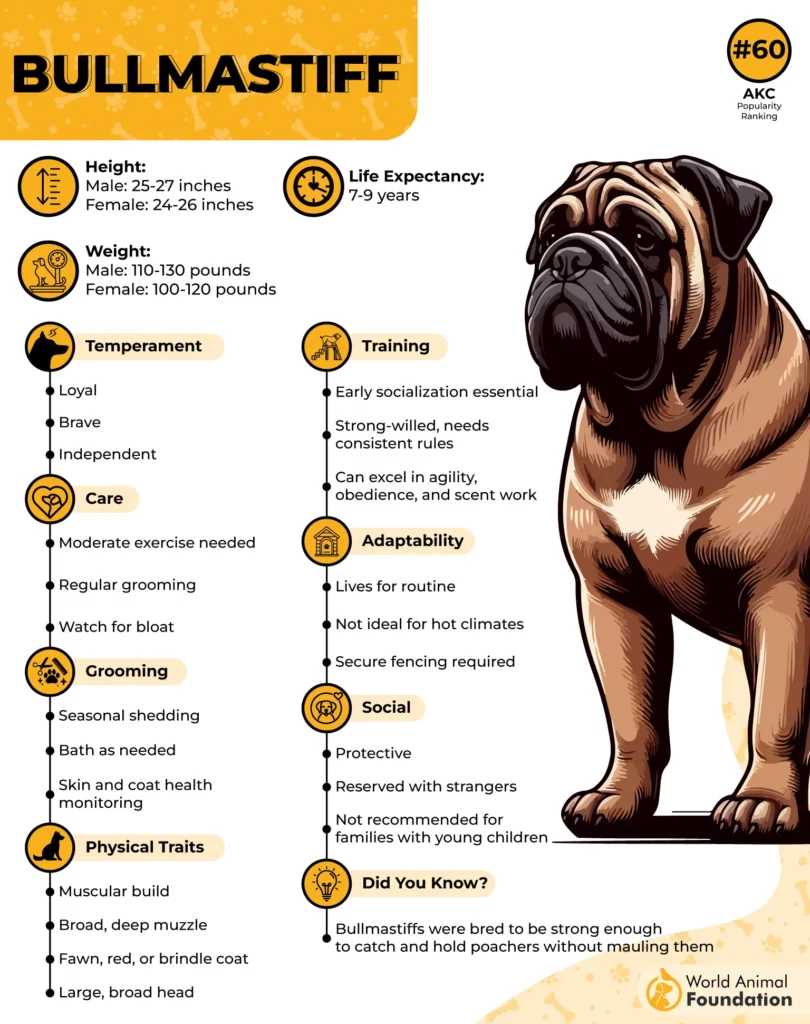
Bullmastiffs are excellent guard dogs, fiercely protective of their homes and families. They are not known for being overly aggressive unless provoked. Bullmastiffs are highly affectionate and can thrive well in a multi-pet household, provided they are socialized properly from a young age. Their strong agility allows them to move with surprising speed, despite their huge size, but they are generally more laid back and calm when in the home.
The Mastiff, or English Mastiff, is one of the largest dog breeds, often referred to as a gentle giant for its calm and affectionate nature, despite its imposing size. Known for its massive build, the Mastiff has a huge head and a short muzzle, contributing to its distinctive look. Originally bred in England for guarding estates and livestock, Mastiffs are naturally protective and make excellent guard dogs.
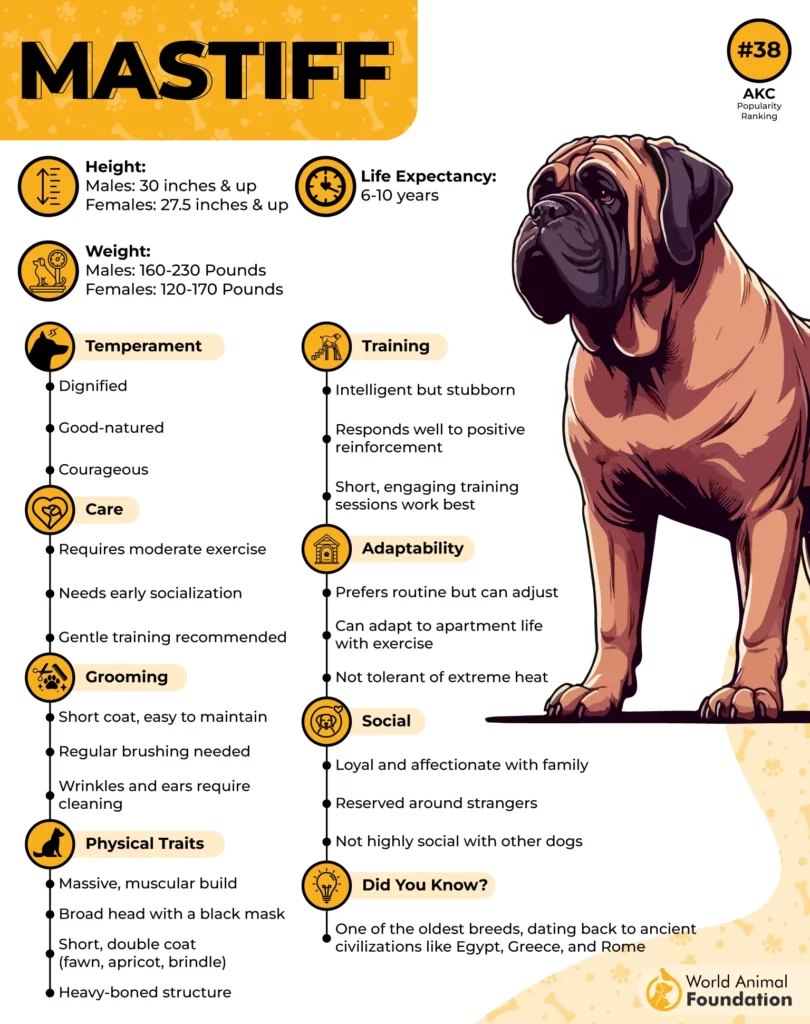
While they are not as agile as Bullmastiffs, their sheer size and strength give them a commanding presence. Mastiffs are great with puppies, cats, and other dogs, though they may require proper socialization to ensure they get along with other animals. They enjoy having plenty of room to move around, and thus are more suited for families with larger houses.
Despite their calm nature, Mastiffs are often protective of their home and could potentially pose a threat to unfamiliar strangers. They require careful training and socialization to avoid trouble in unfamiliar situations.
Bullmastiff vs. Mastiff: Height and Build
While comparing Mastiff vs Bullmastiffs, both appear to be the same size at first glance, there is a big difference in their overall build.
Recognized in the working group by AKC, the Bullmastiff typically stands between 24 to 27 inches tall at the shoulder and weighs between 100 and 130 pounds. They have a muscular, compact build with a slightly more athletic appearance compared to the Mastiff. Despite their size, Bullmastiff dogs are relatively agile and can move quickly when needed, especially given their history as gamekeepers’ guardians.
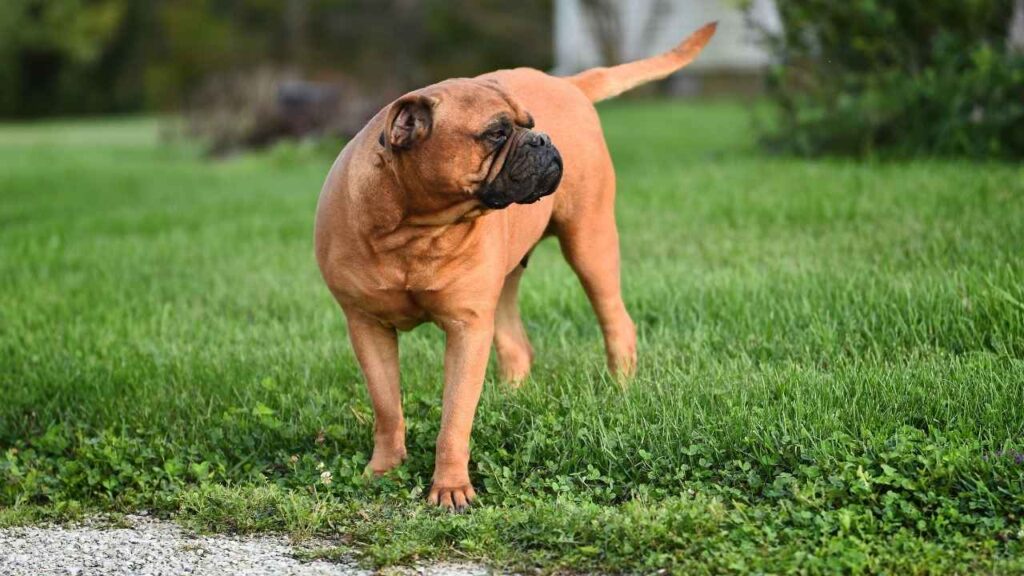
Their broad chest and sturdy body give them a powerful presence, but they tend to be more proportional, without the extreme bulk that defines the Mastiff. They have V-shaped ears and a strong, commanding appearance that adds to their lion-like stature, but they are not as massive as the Mastiff.
As noted by AKC, Mastiffs are even larger, standing between 27 to 32 inches tall at the shoulder, with males often reaching the higher end of this range. These dogs have a heavier, more massive build, with thick bones and a broad, deep chest. Known for their sheer bulk and imposing size, Mastiffs are often considered one of the largest dog breeds in the world.
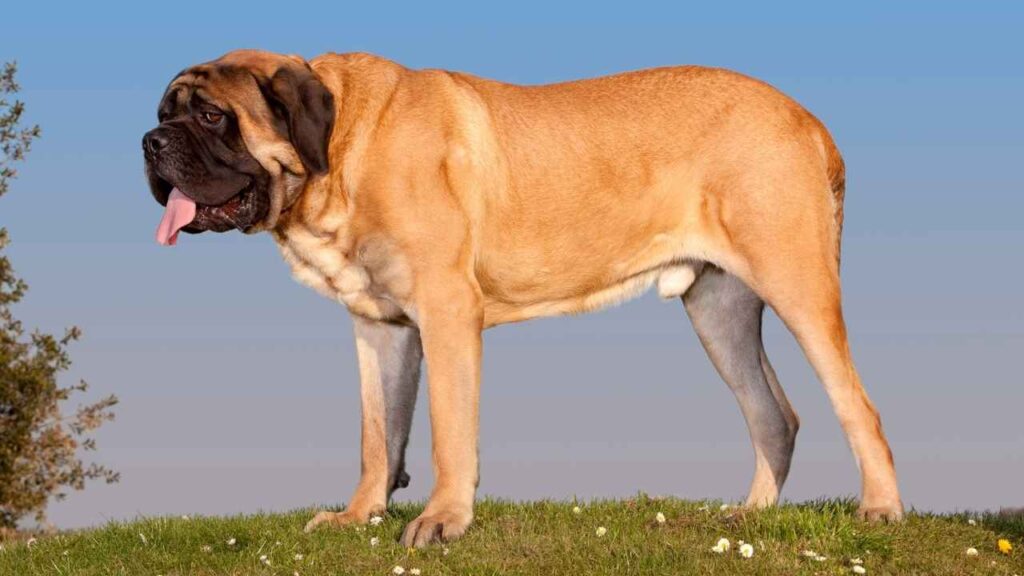
Their weight can range from 120 to 230 pounds, depending on the individual, with many Mastiffs tipping the scales at over 200 pounds. While they share some traits with other large breeds like the bulldog, Mastiffs have a majestic appearance, commanding respect with their sheer size and strength. Whether a pup or fully grown, Mastiffs leave a lasting picture of strength and authority.
Bullmastiff vs. Mastiff: Coat Type and Texture
The Bullmastiff has a short, dense coat that lies flat against the skin, with a coarse texture that is not overly thick. This makes grooming relatively easy, and the coat provides sufficient protection without being too heavy. Bullmastiffs come in several colors, including fawn, brindle, and apricot.
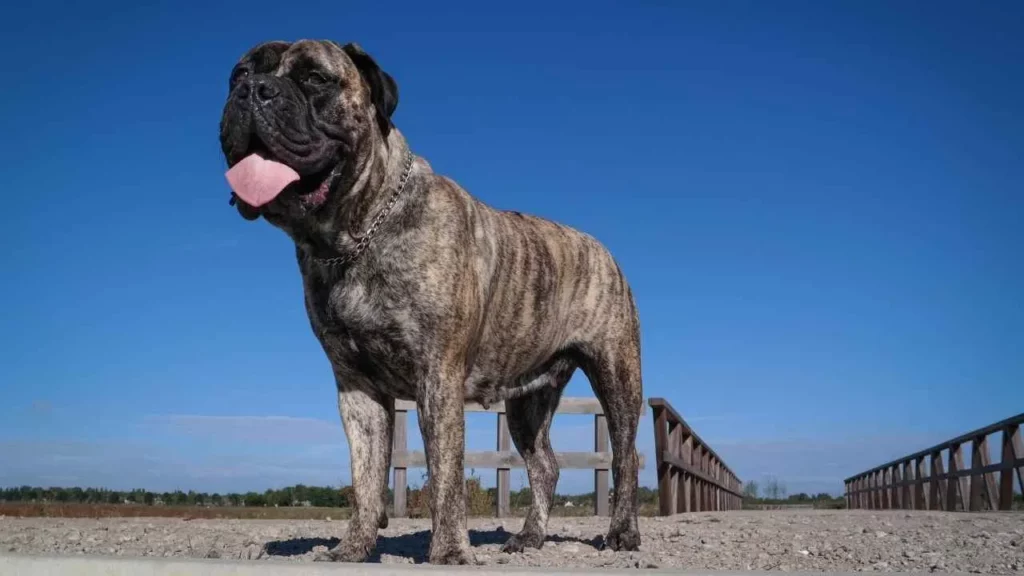
Fawn Bullmastiffs have a yellow-gold hue, while the brindle variety features a striped pattern with dark and light shades. Apricot Bullmastiffs have a deeper, reddish-gold tone, offering a striking contrast to their dark facial mask. The short coat makes them adaptable to various climates, though they still require some care to keep their skin healthy and free from mats.
Mastiffs also have short coats, but their texture is slightly thicker compared to the Bullmastiff, though still smooth and easy to maintain. They require only occasional brushing to remove loose hair and debris. Mastiffs come in a variety of colors, including brindle, fawn, and apricot.
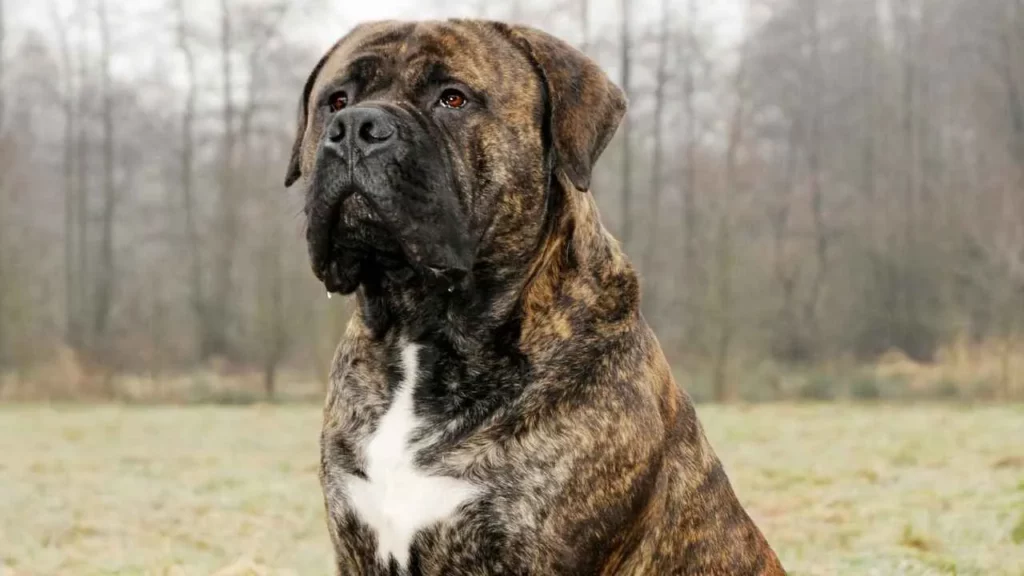
Brindle Mastiffs have a beautiful striped coat, often dark with lighter hues, while fawn Mastiffs are a rich gold, and apricot Mastiffs have a warmer, reddish tone. The short coats of both breeds contribute to their sleek, imposing appearance, and while they are low-maintenance in terms of grooming, they still shed, especially during seasonal changes.
Bullmastiff vs. Mastiff: Temperament and Behavior
The Bullmastiff is known for its calm, laid-back demeanor, making it an affectionate and gentle companion. Despite its large size, this breed has a gentle temperament, especially around small children and family members. Bullmastiffs are courageous and protective, displaying a strong instinct to safeguard their home and loved ones, but they are not typically aggressive.
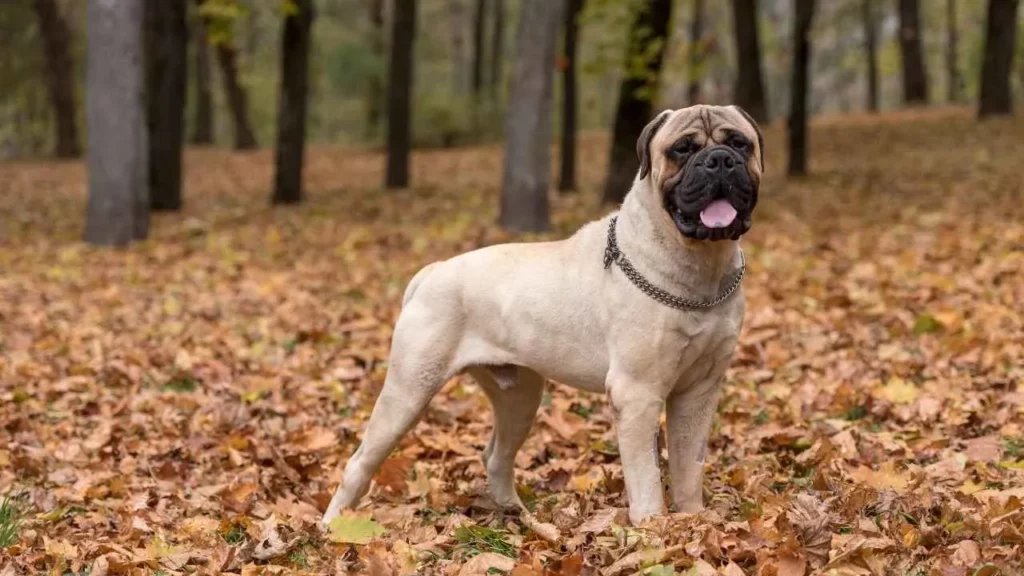
They can be somewhat stubborn, which may make training a challenge, but with consistent and positive reinforcement, they can be successfully socialized with other pets and animals. Bullmastiffs may be more reserved around strangers, but once properly socialized from a young age, they can adapt well to different environments and form strong bonds with their families.
The English Mastiff shares many of the Bullmastiff’s traits, including its affectionate and calm nature. Mastiffs are often described as “gentle giants” due to their relaxed personality and loyalty to their families. Mastiffs are typically more reserved around strangers and may be more protective, but they remain generally calm and gentle.
Training can be a bit stubborn with this breed as well, requiring patience and consistent effort. Mastiffs can also be dangerous if not properly trained or socialized, given their size and strength, and may accidentally hurt someone in an unexpected situation.
However, with proper care, regular vet visits, and attention to their exercise and food intake, Mastiffs can live a healthy, fulfilling life. Their large size and protective instincts mean they need a secure home environment, but with the right training, Mastiffs thrive as loving, loyal companions.
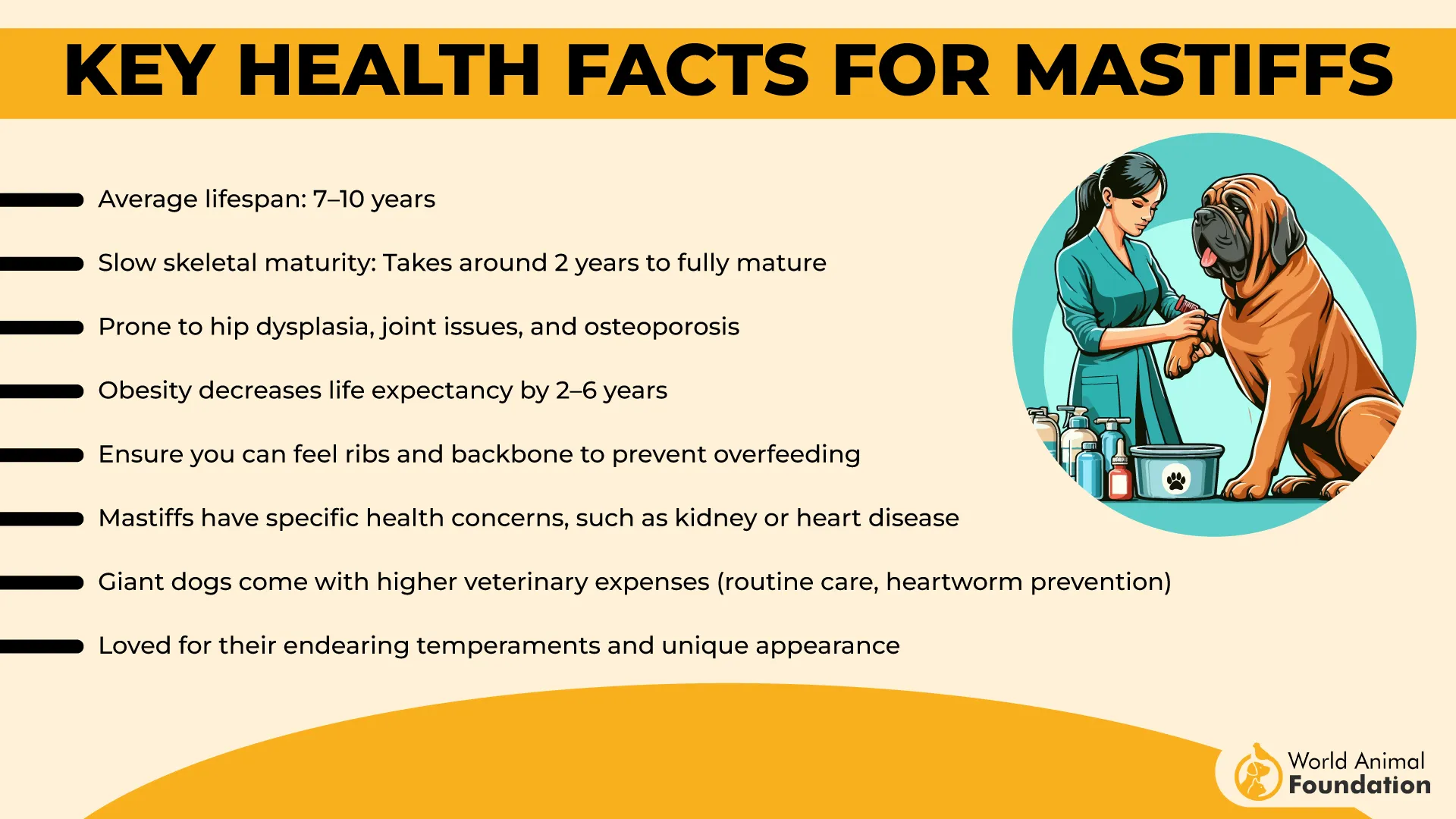
Bullmastiff vs. Mastiff: Health Considerations
When it comes to health considerations, the Bullmastiff requires careful attention due to its large size and susceptibility to joint issues like elbow dysplasia. This condition can cause pain and arthritis, making it crucial for owners to monitor their Bullmastiff’s weight and ensure they maintain a healthy level of exercise to avoid exacerbating joint problems.
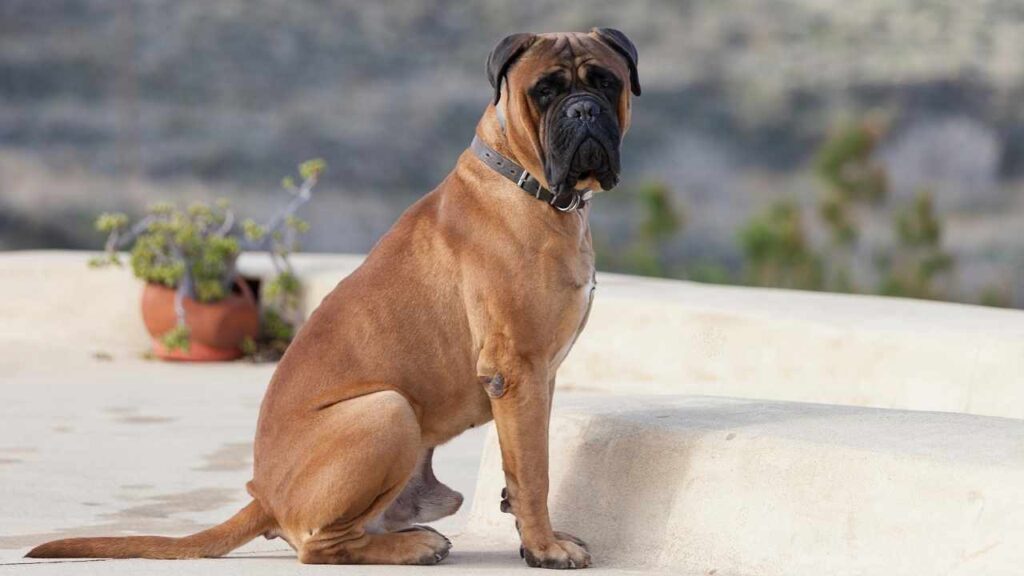
As noted by PetMD, they are prone to Brachycephalic obstructive airways syndrome (BOAS) due to their short faces, eye problems, and certain types of cancers. Bullmastiffs are also known to drool excessively, which can lead to skin irritation around the mouth if not properly cleaned.
A balanced diet and proper food are essential to prevent obesity, which can lead to further health complications. With regular vet check-ups, a controlled diet, and appropriate exercise, Bullmastiffs can manage their health concerns and enjoy a comfortable life.
The Mastiff, being one of the largest dog breeds, shares many of the same health considerations. Mastiffs are also prone to elbow dysplasia and other joint issues due to their massive size. This can lead to discomfort or even long-term pain if not managed carefully.
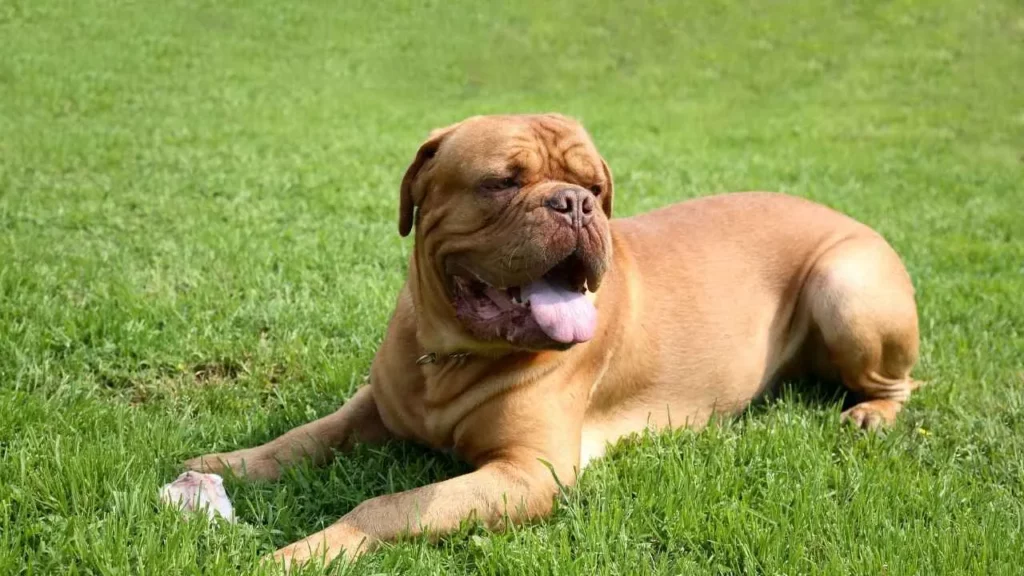
As noted by PetMD, this breed is susceptible to heart diseases such as dilated cardiomyopathy, certain types of cancers, including lymphoma and mast cell tumors. There is an increased risk of bloat or gastric dilatation volvulus (GDV) in which the stomach fills with air and twists. GDV is a life-threatening condition that requires immediate attention and a vet visit.
Mastiffs also tend to drool a great deal, which is another health aspect to consider for pet parents. Their sheer size means they require careful attention to their weight and diet to avoid obesity, which can exacerbate joint problems and strain on the heart.
Bullmastiff vs. Mastiff: Life Expectancy
The average life expectancy of a Bullmastiff typically ranges from 7 to 9 years. While they are generally healthy dogs, their size makes them susceptible to certain health conditions, such as elbow and hip dysplasia, and bloat.
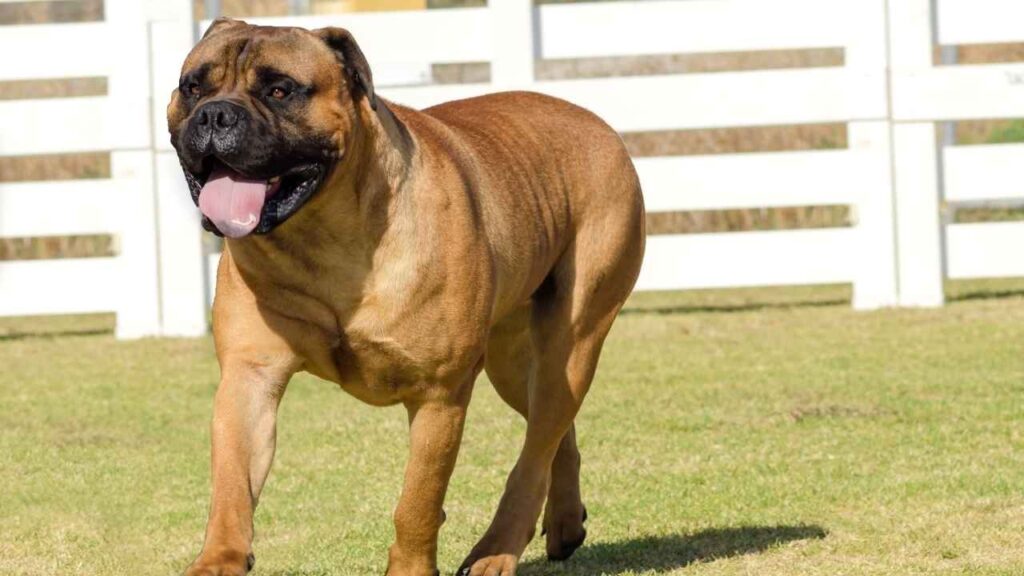
Regular veterinary care, a healthy diet, and proper exercise can help manage these risks and may help extend their lifespan. Bullmastiffs tend to live slightly longer than Mastiffs, possibly due to their somewhat smaller size and fewer complications associated with their overall health.
As noted by Britannica, Mastiffs have a slightly shorter life expectancy, often ranging from 6 to 10 years. Their large frame places additional strain on their bodies, making them prone to issues such as joint problems, heart conditions, and certain types of cancer.
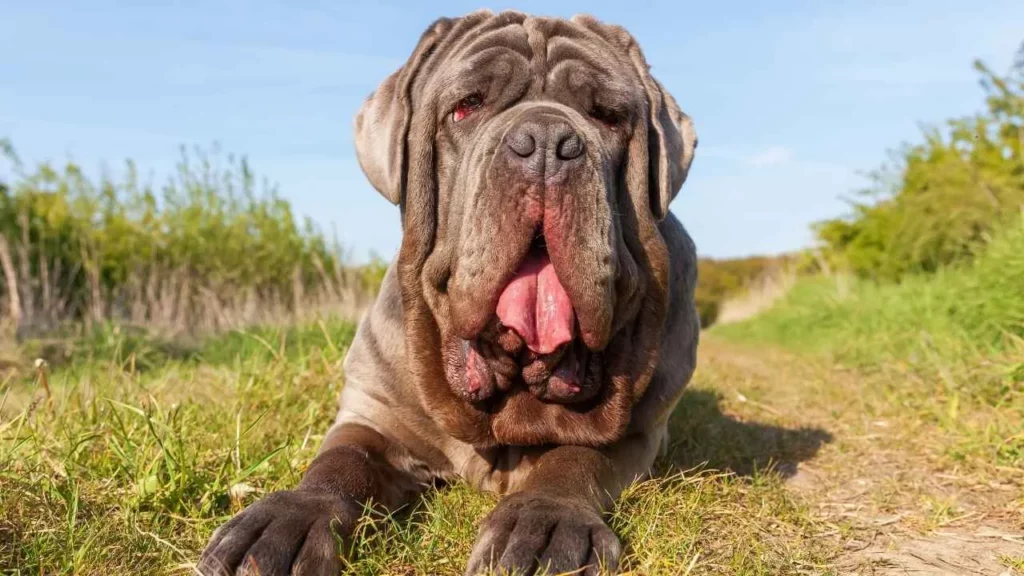
While they require extra care to manage their health, with proper nutrition, exercise, and regular vet check-ups, Mastiffs can still lead fulfilling lives. The lifespan of Mastiffs can vary, with some living closer to the 6-year mark, while others reach the full 10 years with good care.
Conclusion
In conclusion, both the Bullmastiff and Mastiff are remarkable breeds, each with their unique characteristics and qualities. While they share a similar protective nature, size, and strength, their differences in build, agility, and temperament make them suited to different types of owners.
The Bullmastiff’s slightly more athletic build and agility make it a great choice for those looking for a powerful yet responsive dog. In contrast, the Mastiff’s imposing size and calm demeanor make it a classic choice for those seeking a gentle giant.
Whether you’re drawn to the Bullmastiff’s history as a gamekeeper’s protector or the Mastiff’s sheer majesty, both breeds offer loyalty, affection, and protection. Understanding their traits will help you choose the right companion to fit your lifestyle, ensuring you have a happy and healthy relationship with your giant furry friend.


